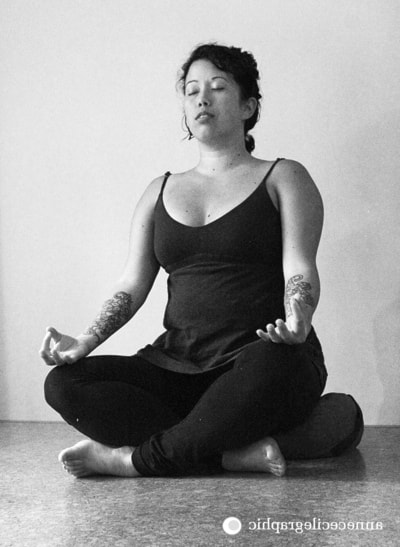Let’s ask ourselves what is stress? Many of us know the experience of being stressed, but do we fully understand what is happening within ourselves?
Guy Slowik, MD writes “Stress is the emotional and physical strain caused by our response to pressure from the outside world.” This definition of stress differentiates — stress is not what is happening — ie. “I’m stressed out because of work.”
Instead it suggests, stress is our response to what is happening – ie. “I am responding to my work with stress.”
I agree. With awareness and practice, we can learn to respond differently to the outside pressures that arise in our lives.
Harvard Medical School has three suggestions that are most effective to reduce stress: deep breathing, stretching and meditation. In most yoga classes, you will experience all three.
There are unlimited ways to experience yoga, the key is to find a style or approach that resonates within you.
Here is a short practice you can enjoy at home:
Sitting up straight with relaxed shoulders in a chair, with your feet grounded firmly on the floor or yoga mat.
Another variation is to relax onto your back, with your neck and shoulders in a neutral spine on the floor.
Visualize turning down the volume on your thoughts, allowing them to become like clouds in the sky, simply drifting by you.
Begin to observe your breath, listening to the sound. Notice the length of your in breath (inhalation) and out breath (exhalation).
Feel that transition space, or pause between the inhalation and exhalation.
If your mind is particularly busy, just count your breathe rhythmically 1-2-3-4 Mississippi. Eventually, you may build towards breathing in to the count of eight and out for the same.
Practice deepening your breath all the way to the diaphragm, just beneath the belly button.
Slowing down and deeply breathing calms the mind. Remember, the slower and deeper your breath, the more calm your mind and body become. A calm mind allows space for wisdom, clarity, creativity and healing.
Gather an eyepillow, neck roll, yoga bolster or a stack of firm blankets.
Keep them within reach. Bring one hip next to the wall, resting onto your back and lifting your legs up the wall.
Keep the knees bent with your feet in front of them for a gentler option. Or slide your hips closer to the wall until you feel a gentle opening in the backs of your legs.
Press your feet against the wall to lift your hips & slide the bolster or blankets underneath you.
Your tailbone rests just towards the wall in front of your bolster or blankets.
Add a neck roll or eyepillow for added comfort.
You might enjoy listening to calming music here. If you start to lose circulation in your feet, come out of the pose slowly and gently.
In a comfortable seated or kneeling position, reconnect to your deep belly breathing.
Feel yourself root to the Earth and allow that connection space to nurture you. Visualize your inhalation bringing into you peace, ease, love, and acceptance.
Allow your needs to emerge or any intentions you wish to set. With the exhalation, let go of the energy you’re ready to release — stress, charged emotions, worry, discontent or anything no longer serving you.
Let it be that simple to begin. Yes!
Many people find the support of community and knowledgeable instructors vital to their yoga practice.
April is teaching an eight-week guided introduction to meditation and the energy body beginning October 23.
April Kuramoto runs the Blys Yoga Studio in Parksville
